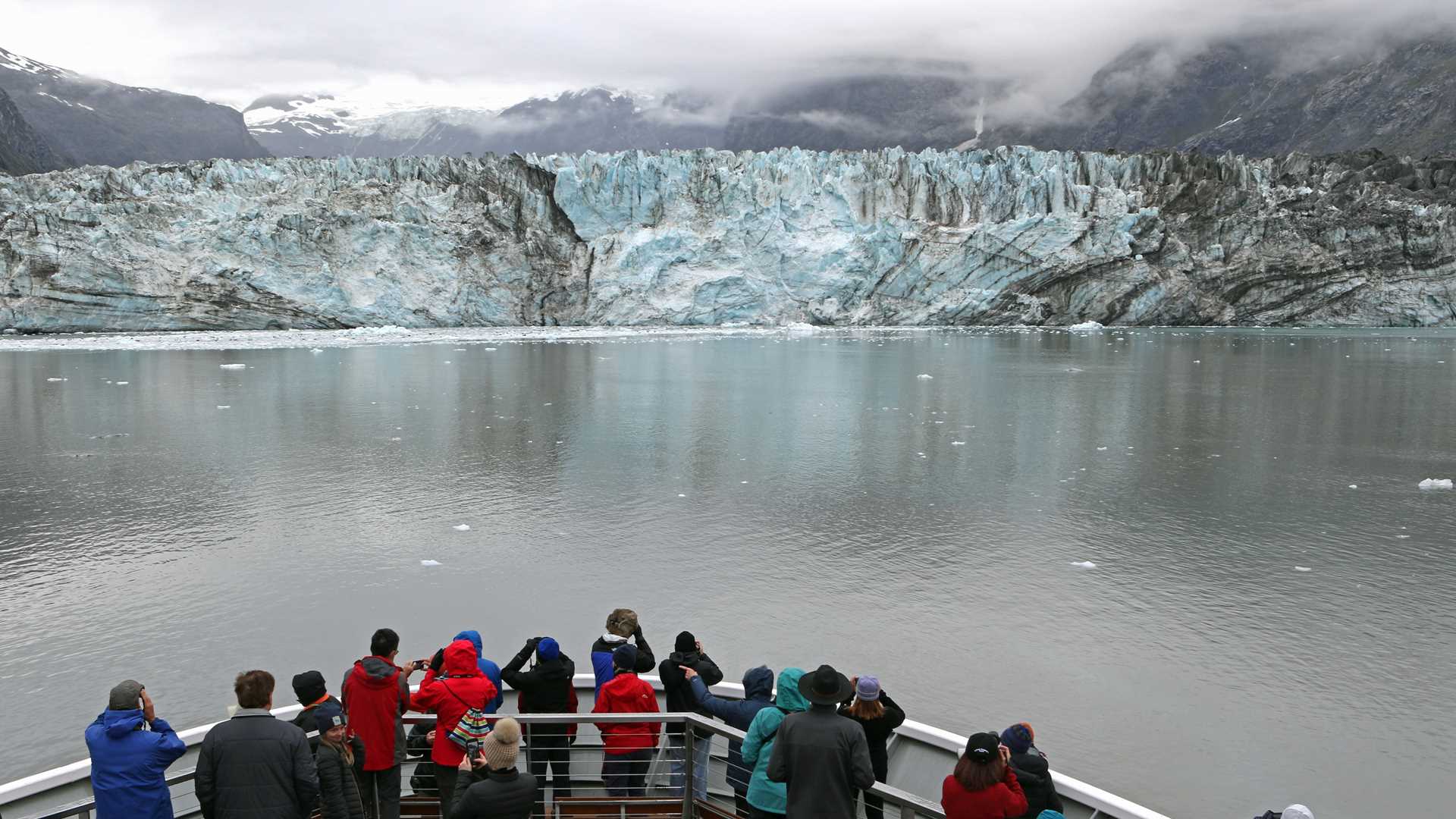This morning the National Geographic Quest awoke in Glacier Bay National Park. A grey day after being spoiled by sun in Southeast, Alaska, we bundled up and joined new friends and naturalists on the bow. The highlight of the morning was Johns Hopkins glacier. Named by a Johns Hopkins graduate and later professor this mile wide, twelve-mile long glacier is one of few glaciers in Alaska that is actually stable, if not advancing. The impressive 250’ face had dark wrinkles embedded in the ice from the medial moraines descending from higher reaches. If only glaciers could talk and tell us of their passage of time. When Captain George Vancouver was charting this area in 1794, Glacier Bay barely existed. Two hundred and fifty years ago a single, tidewater glacier filled the Bay. At the end of the Little Ice Age in 1750, the glacier began to retreat and today one can sail 60 miles down the fjord.
Before lunch we cruised through Russell Cut looking for wildlife on the tidal flat. In 1880 John Muir paddled his way into the Bay with a Presbyterian missionary and 4 Tlingit people. Muir came to Alaska wanting to prove that the U-Shaped valleys in Yosemite had been carved by ice. His party camped on Russell Island and at that time the island was emerging from the face of the glacier. The ice had retreated 40 miles from the time of Vancouver’s visit almost 100 years prior. Russell Island since Muir’s visit has been on the rise. During the Little Ice Age this area was covered with the thickest ice and the weight of that ice depressed the crust of the earth!
Today Russell Island is the center of isostatic rebound/uplift in the park. If you can feel the earth move under your feet it’s because this area is uplifting at a rate of up to 1.25” a year. Glacier Bay has one of the fastest rates of uplift on the planet. Since the retreat of ice over 200 years ago, uplift of over 18 feet has taken place in the park. Needless to say, Glacier Bay is still being shaped by its retreating glaciers and rebound.
On our way to Bartlett Cove we passed Marble Island where there was a variety of critters large and small. Sea lions dominated the rocks and the captain pulled the ship fairly close so we could get a good look at this amazing species of pinniped. Named after the naturalist on Vitus Bering’s 1741 expedition, the (male) Steller sea lion can weigh up to 2400 pounds making them the largest species of sea lion on the planet. Imagine what it would take to feed an animal that size. Consuming up to 6% of their body weight requires 40-120 pounds of food a day!
Horned and tufted puffins flew around the ship as we made our way through the mist of this maritime climate. Before dinner we had an opportunity to stretch our legs in Bartlett Cove and were glad to have a moment back in the emerald forest.







